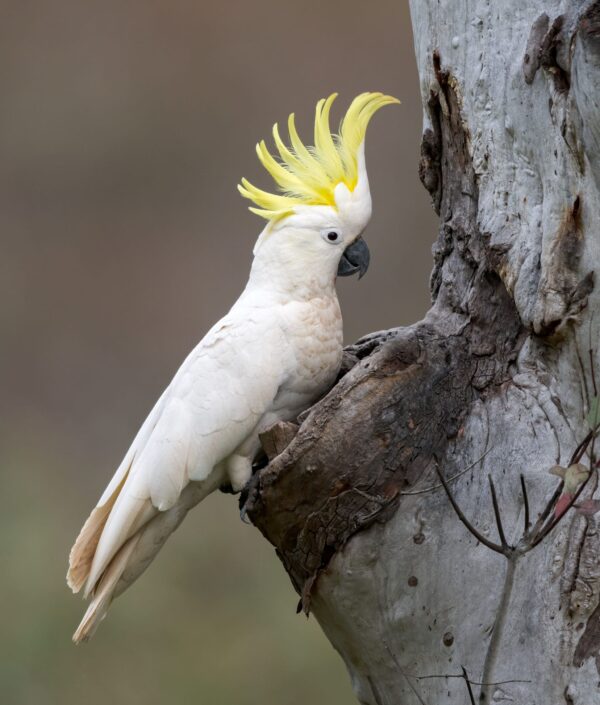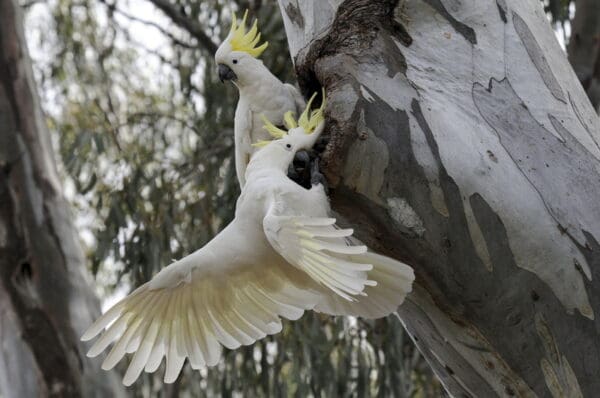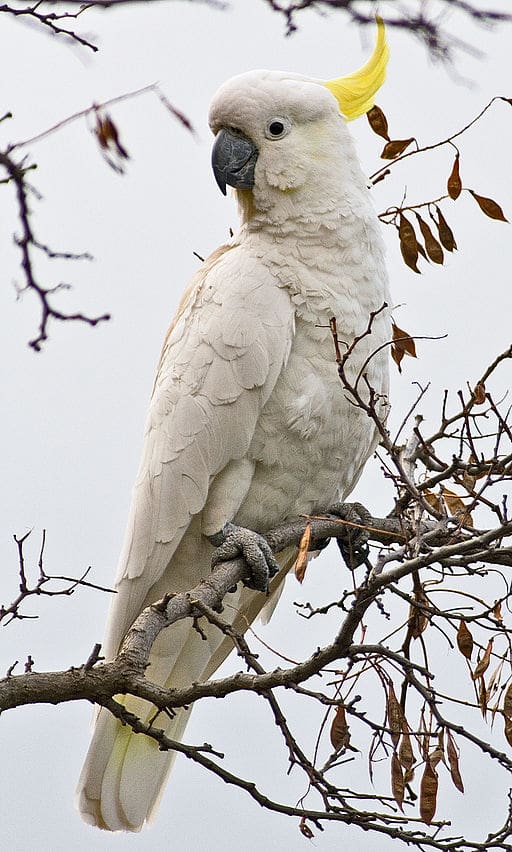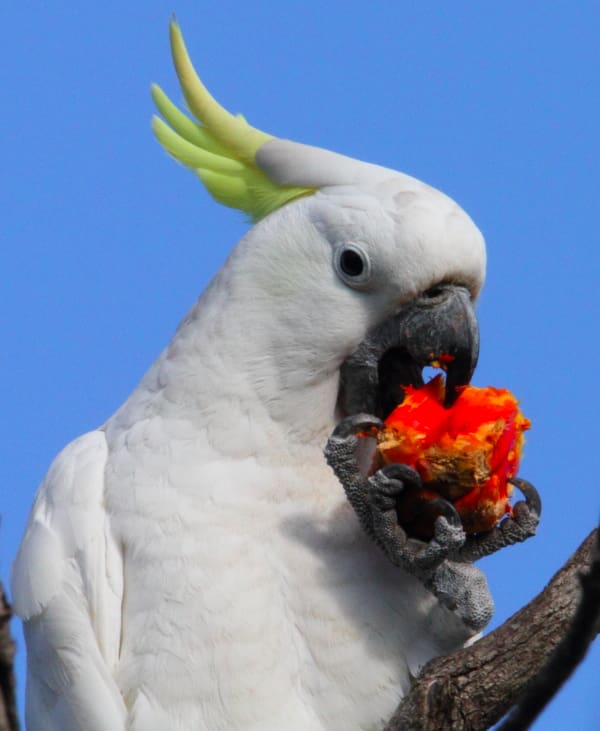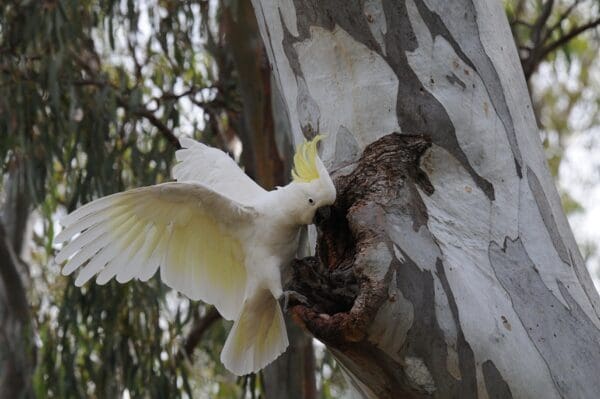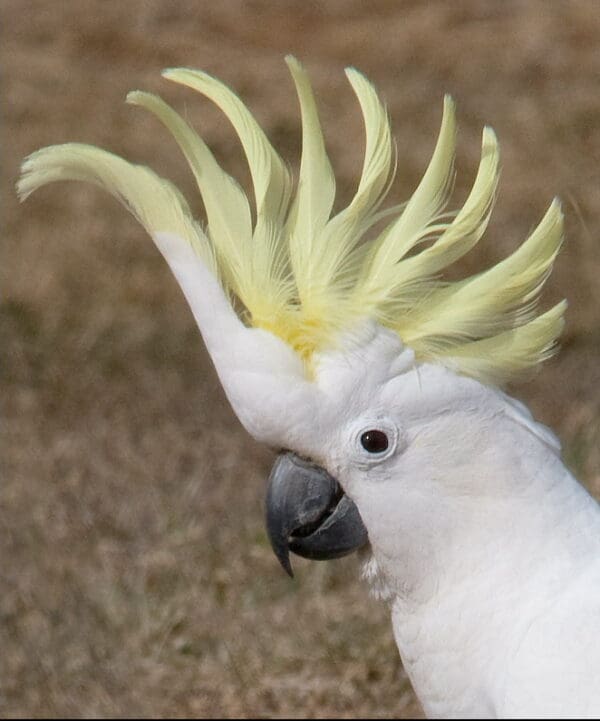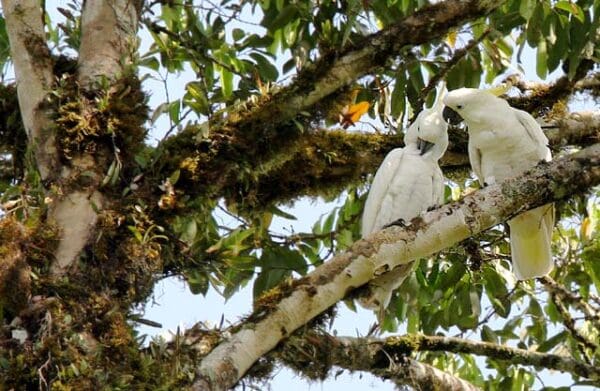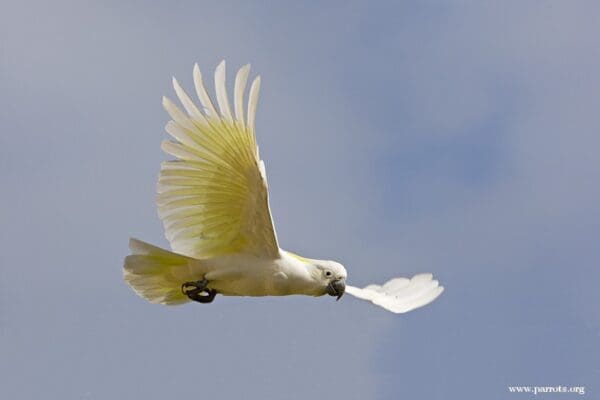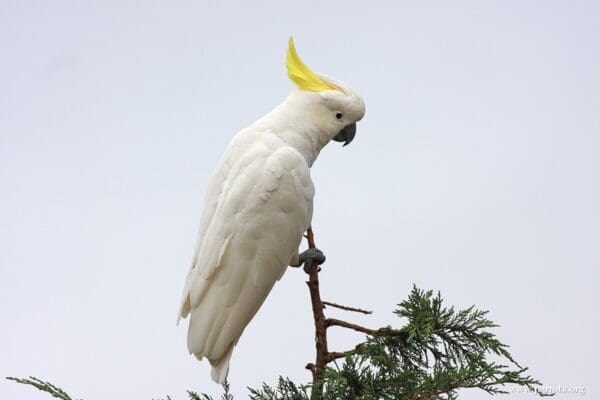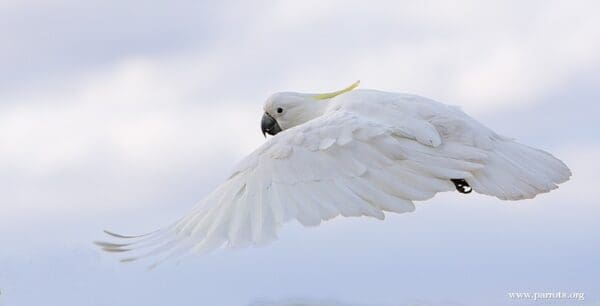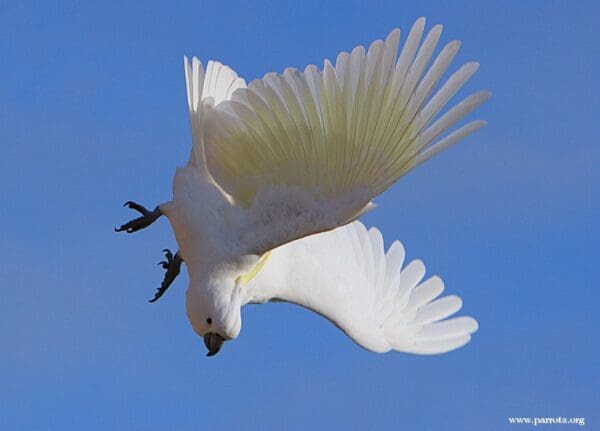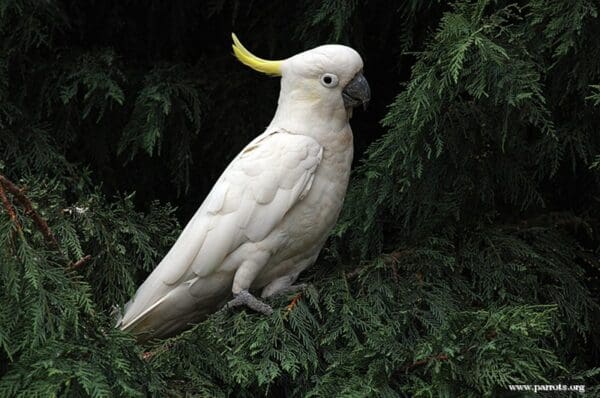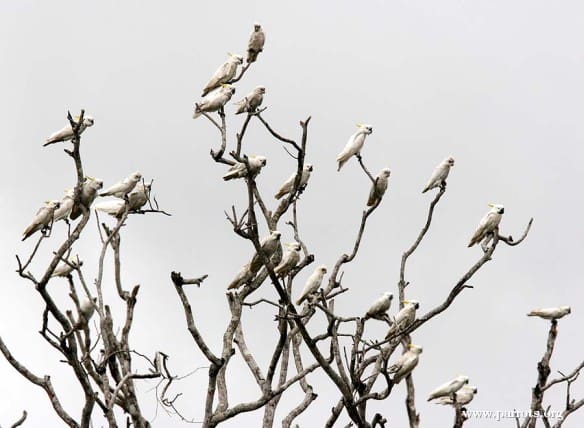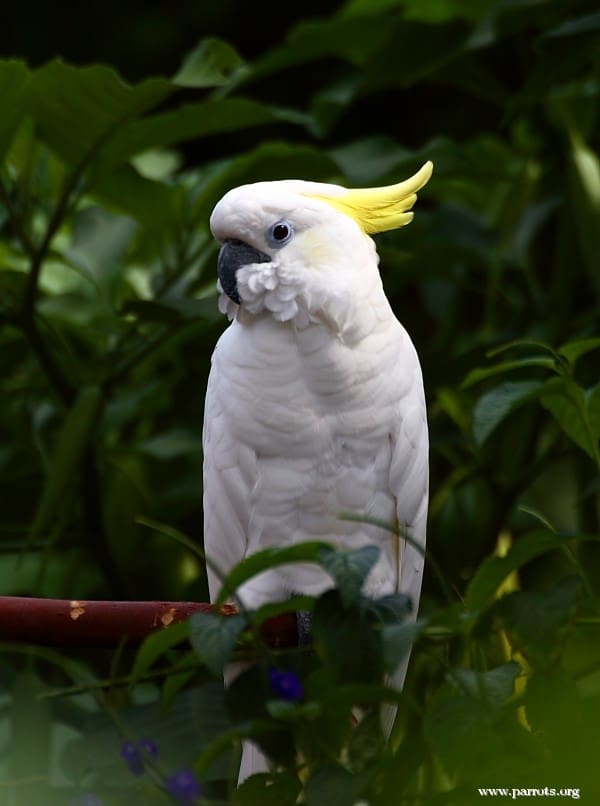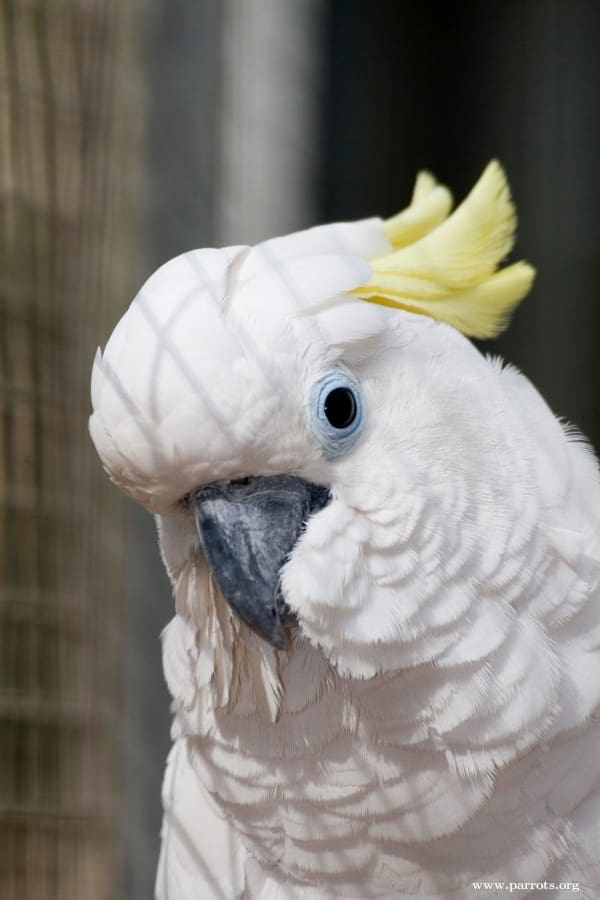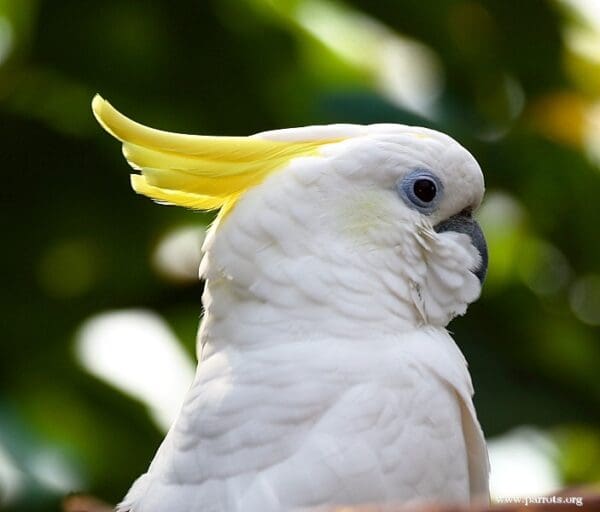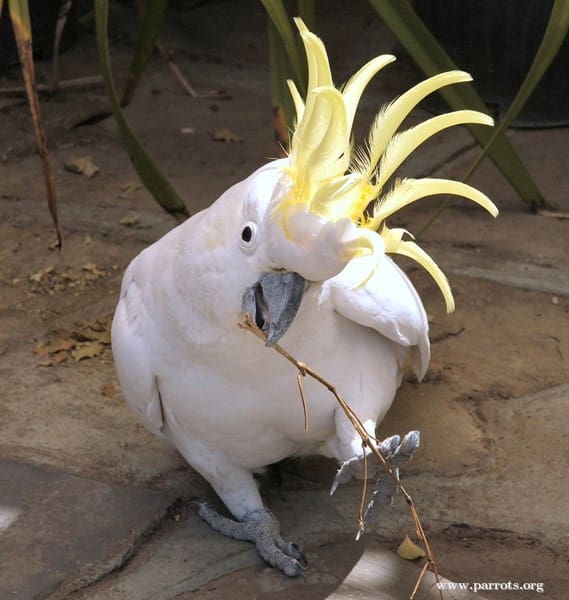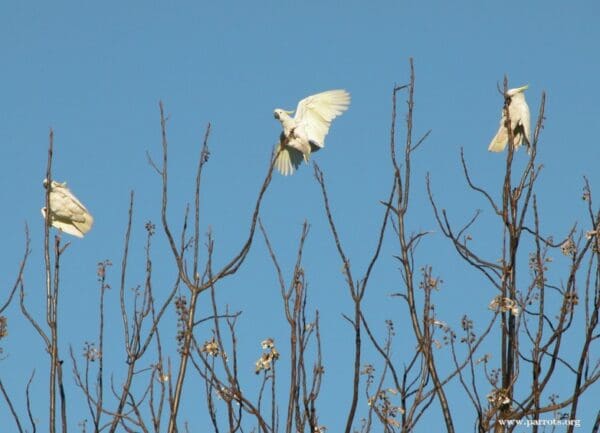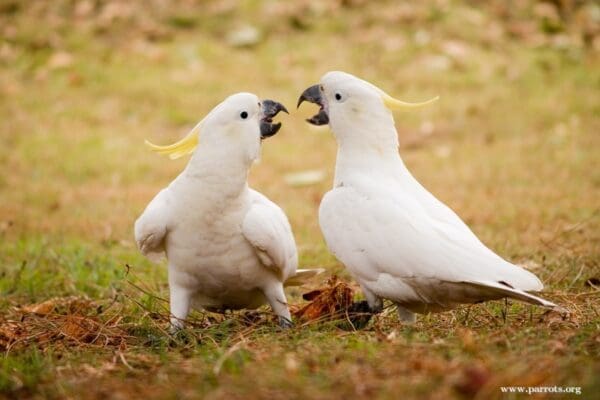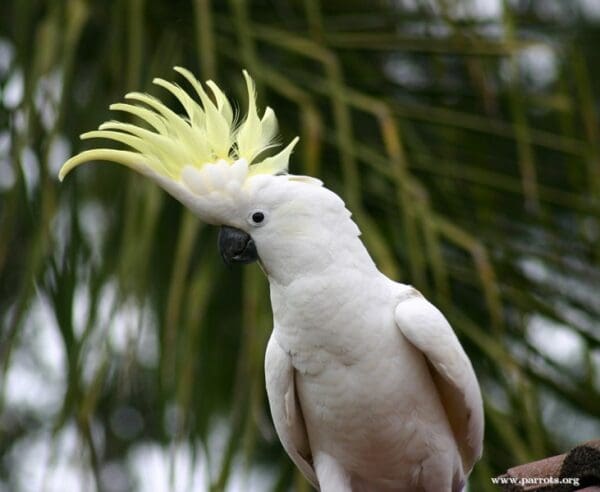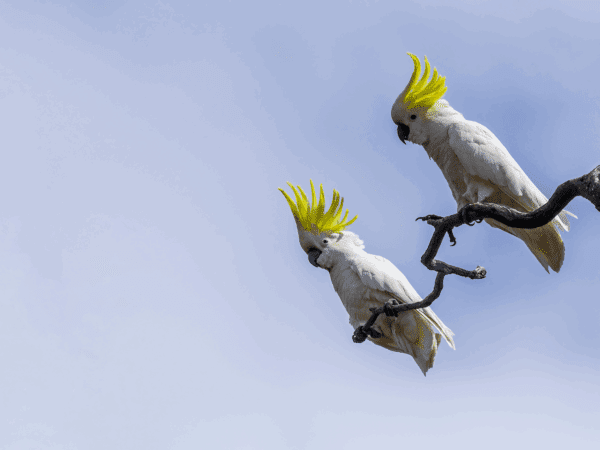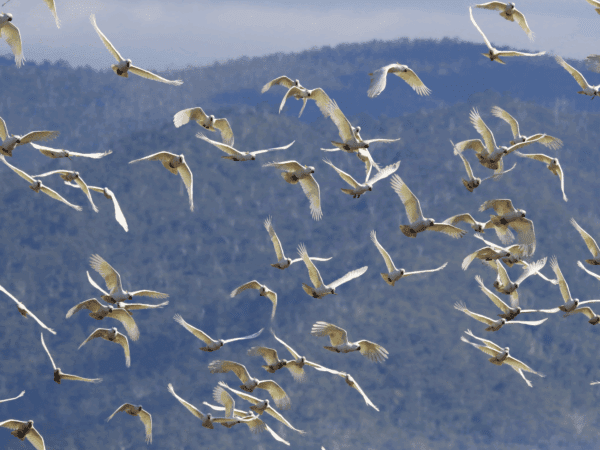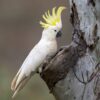
![© JJ Harrison (https://www.jjharrison.com.au/) [CC BY-SA 3.0] via Wikimedia Commons A wild Sulphur-crested Cockatoo perches in a tree](https://parrots.org/wp-content/uploads/2023/01/wpt_Sulphur-crested-Cockatoo_1438-33-100x100.jpg)
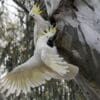
![© JJ Harrison [GFDL 1.2 or CC BY-SA 3.0] via Wikimedia Commons A wild Sulphur-crested Cockatoo perches in a tree](https://parrots.org/wp-content/uploads/2023/01/wpt_Sulphur-crested-Cockatoo_1438-30-100x100.jpg)
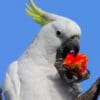
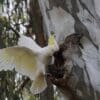
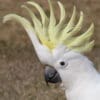
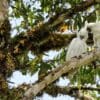
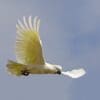
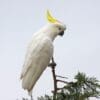
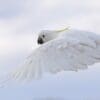
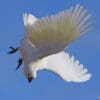
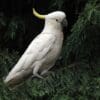
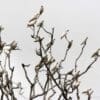
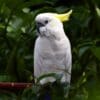
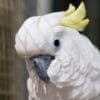
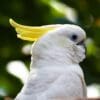
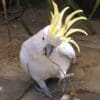
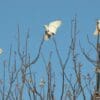
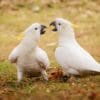
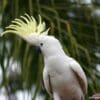
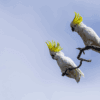
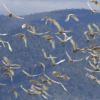
DID YOU KNOW?
Sulphur-crested Cockatoos have been known to mob raptors and have been seen dropping leafy twigs onto Bat Hawks in an attempt to drive them away.

Cacatua

galerita
Size:
50 cm (19.5 in)
Weight:
815-975 g (28.5-34.1 oz)
Subspecies including nominate:
five: C.g. galerita, C.g. queenslandica, C.g. fitzroyi, C.g. triton, C.g. eleonora
Colour Adult:
C.g. galerita: Both adults generally white, washed with pale yellow on ear coverts and bases of feathers of cheeks and throat; yellow crest; eye ring white. In male, eye dark brown, in female, red/brown. Beak slate grey.
C.g. queenslandica: Both adults as in galerita but smaller in size; beak broader, depressed and ridged.
C.g. fitzroyi: Both adults as in galerita but with minimal yellow on ear coverts and feathers of cheeks and throat; broader, very ridged beak. Eye ring pale blue.
C.g. triton: Both adults as in galerita but with wider crest feathers. Eye ring blue.
C.g. eleonora: Both adults as in triton but beak smaller.
Colour Juvenile:
C.g. galerita: Like adults but sometimes with scattered feathers washed with pale grey. Eye pale brown.
C.g. queenslandica: As in adults.
C.g. fitzroyi: As in adults.
C.g. triton: As in adults.
C.g. eleonora: As in adults.
Call:
Very loud, raucous, creaky sounding screech ending in upward or downward inflection. Also whistling. In alarm harsh gutteral screeches and shrill squawks. Perched birds may also produce low murmuring. Immatures emit a quiet, high-pitched whine, and a grating creaky call.
More Information:
WPT-supported project: Fighting Parrot Trafficking in Indonesia
Content Sources:
CITES
Avibase
BirdLife International
Cornell Lab of Ornithology/Birds of the World
Parrots: A Guide to Parrots of the World, Juniper and Parr, 1998
Parrots of the World, Forshaw and Cooper, 1989. 2010 edition
Parrots of the World, Forshaw, 2006.
Parrots in Aviculture, Low, 1992.
Psittacine Aviculture, Schubot, Clubb and Clubb, 1992.
Avian Pediatric Seminar Proceedings, various authors, 1988.
Captive Status:
Common
Longevity:
65 or more yrs.
Housing:
Walk-in enclosure minimum length 4.5 m (14.7 ft).
Diet:
Mix of small seeds: canary, oats, safflower; spray millet; limited sunflower seed, dry, soaked or sprouted; spouted pulses, cooked butterbeans and lentils; boiled maize; green leaves of Swiss chard, lettuce, sowthistle, dandelion, chickweed; vegetables such as: corn, carrot, celery, zucchini, green beans and peas in the pod; fruit such as: apple, pear, orange, cactus fruits, bananas; nuts such as: walnuts, hazelnuts, pecans and roasted peanuts; complete pellet.
Enrichment:
Very active and inquisitive so provide lots of bird-safe chew items (heat sterilized pine cones, fir, elder, pine and willow branches) and toys, as well as challenging puzzle and forage toys.
Nest Box Size:
Vertical open box 16″ x 16″ x 36″ (40.6 cm x 40.6 cm x 91.5 cm) or vertical box 16″ x 16″ x 36″ (40.6 cm x 40.6 cm x 91.5 cm).
Clutch Size:
2 to 3
Fledging Age:
11 weeks
Hatch Weight:
—
Peak Weight:
—
Weaning Weight:
—
World Population:
Unknown, decreasing.
IUCN Red List Status:
Least Concern
CITES Listing:
Appendix II
Threat Summary:
In spite of protection in Indonesia this species is still trapped for the wild bird trade. Is also not a protected species in Australia, therefore culls occur. Habitat loss is also a threat.
Range:
C.g. galerita: E and SE Australia from N Queensland south to Tasmania and SE South Australia, including Kangaroo Island. Introduced to SW Australia and New Zealand.
C.g. queenslandica: Cape York Peninsula and southern Torres Strait island, N Queensland.
C.g. fitzroyi: N Australia from Kimberly division of W Australia east to Gulf of Carpentaria, N Queensland.
C.g. triton: W Papuan Islands, Indonesia and New Guinea. Introduced to Palau Islands, Micronesia, and some islands of E Moluccas, Indonesia.
C.g. eleonora: Aru Islands, Indonesia. Introduced to Kai Islands.
Habitat:
Found in variety of forest areas such as secondary growth, woodland (including swamp and riverine), mangroves, open country, agricultural land (including rice fields and palm plantations), savanna, mallee and suburban areas. Found up to 1500 m (4920 ft) in parts of Australia, 2400 m (7872 ft) in Papua New Guinea.
Wild Diet:
Forages on grasses and herbs. May take sprouting maize and wheat. Also feeds on harmful weeds such as cotton thistle. Other foods include: roots, rhizomes, nuts, berries, flowers, corms, blossoms and insect larvae.
Ecology and Behaviour:
Mostly resident, but local movements have been noted between coastal Australian islands. Faithful to roosting areas. Large groups of up to 2000 birds feed on the ground, with sentinel birds taking turns to be on the lookout for predators. Noisy and conspicuous. Most active immediately after dawn.
Clutch and Egg Size:
2 to 3 elliptical eggs, 46.5 x 33.5 mm (1.8 x 1.3 in).
Breeding Season:
Australia: May-September in the north, August-January in south, few records from New Guinea. Nest is bed of woodchips in a tree-hollow.
Related Links:
—
